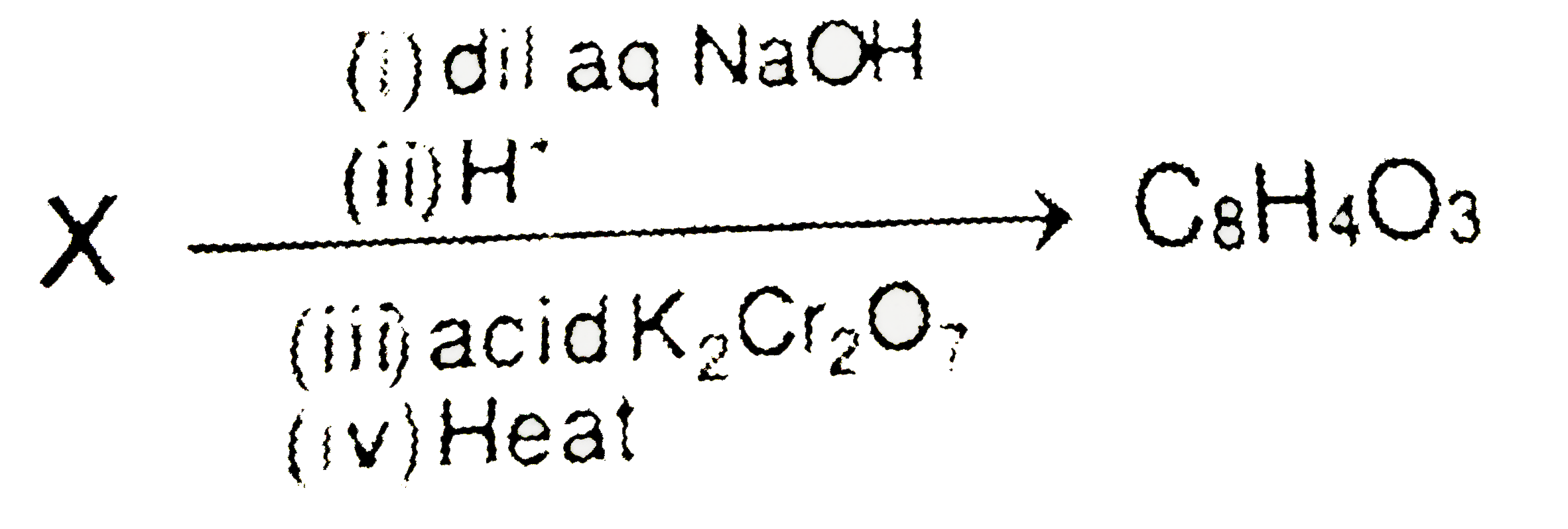An organic compound undergoes addition reactions and gives a red precipitate with ammoniacal cuprous chloride. Therefore, the organic compound could be:
ethane
ethene
ethyne
ethanol
To solve the question, we need to identify the organic compound that undergoes addition reactions and gives a red precipitate with ammoniacal cuprous chloride. Let's break down the solution step by step.
Step 1: Understand Addition Reactions
Addition reactions occur when two or more reactants combine to form a single product. Typically, these reactions involve compounds with double or triple bonds, which can break to form new single bonds.
Hint: Look for compounds with double or triple bonds, as they are more likely to undergo addition reactions.
Step 2: Identify the Types of Organic Compounds
The question provides us with several organic compounds:
1. Ethane (C2H6) - single bond
2. Ethene (C2H4) - double bond
3. Ethyne (C2H2) - triple bond
4. Ethanol (C2H5OH) - single bond
Hint: Eliminate compounds that do not have double or triple bonds, as they will not undergo addition reactions.
Step 3: Analyze the Remaining Compounds
After eliminating ethane and ethanol, we are left with ethene and ethyne.
Hint: Focus on the properties of ethene and ethyne regarding their reactivity with ammoniacal cuprous chloride.
Step 4: Reaction with Ammoniacal Cuprous Chloride
Ammoniacal cuprous chloride (CuCl2 + NH4OH) is known to react with terminal alkynes (like ethyne) to form a red precipitate of copper acetylide (Cu2C2).
- For Ethyne (C2H2):
- Reaction:
C2H2+CuCl2+NH4OH→Cu2C2+NH4Cl+H2O
- This reaction produces a red precipitate of copper acetylide.
- For Ethene (C2H4):
- Ethene does not react with ammoniacal cuprous chloride to form a red precipitate.
Hint: Check if the compound can produce a red precipitate when reacted with ammoniacal cuprous chloride.
Step 5: Conclusion
Since ethyne reacts with ammoniacal cuprous chloride to form a red precipitate, while ethene does not, the organic compound in question must be ethyne.
Final Answer: The organic compound is Ethyne (C2H2).
Addition reactions occur when two or more reactants combine to form a single product. Typically, these reactions involve compounds with double or triple bonds, which can break to form new single bonds.
The question provides us with several organic compounds:
1. Ethane (C2H6) - single bond
2. Ethene (C2H4) - double bond
3. Ethyne (C2H2) - triple bond
4. Ethanol (C2H5OH) - single bond
After eliminating ethane and ethanol, we are left with ethene and ethyne.
Ammoniacal cuprous chloride (CuCl2 + NH4OH) is known to react with terminal alkynes (like ethyne) to form a red precipitate of copper acetylide (Cu2C2).
- Reaction:
C2H2+CuCl2+NH4OH→Cu2C2+NH4Cl+H2O
- This reaction produces a red precipitate of copper acetylide.
- Ethene does not react with ammoniacal cuprous chloride to form a red precipitate.
Since ethyne reacts with ammoniacal cuprous chloride to form a red precipitate, while ethene does not, the organic compound in question must be ethyne.
Topper's Solved these Questions
- ORGANIC CHEMISTRY BOOK - ICSECHAPTER - ORGANIC CHEMISTRY EXERCISE - QUESTIONS FOR PRACTICE
161 Videos
- ORGANIC CHEMISTRY BOOK - ICSECHAPTER - ORGANIC CHEMISTRY EXERCISE - IMPORTANT QUESTIONS FOR REVISION
79 Videos
- ORGANIC CHEMISTRY BOOK - ICSECHAPTER - ORGANIC CHEMISTRY EXERCISE - QUESTIONS FOR PRACTICE PAPER ON EXAMINATION PATTERN (ANSWER THE QUESTIONS)
40 Videos
- MOLE CONCEPT AND STOICHIOMETRYBOOK - ICSECHAPTER - MOLE CONCEPT AND STOICHIOMETRYEXERCISE - ASSERTION AND REASON BASED QUESTIONS
1 Videos
- PART B (STIOCHIOMETRY) PRECENTAGE COMPOSITION - EMPIRICAL & MOLECULAR FORMULA CHEMICAL EQUATION CALCULATIONSBOOK - ICSECHAPTER - PART B (STIOCHIOMETRY) PRECENTAGE COMPOSITION - EMPIRICAL & MOLECULAR FORMULA CHEMICAL EQUATION CALCULATIONSEXERCISE - Questions (G : Chemical Equations)
17 Videos
Similar Questions
Which compound undergoes iodoform reaction ?
View SolutionThe unsaturated hydrocarbon obtained by the reaction of a dihalogen derivative with alcoholic potash gives a red precipitate with ammoniacal cuprous chloride. The dihalogen derivative gives propanal on heating with aqueous potash. The dihalogen derivative is:
View Solution
Knowledge Check
Which one gives a red precipitate with ammoniacal solution of copper(I) chloride?
(A) Ethane
(B) Ethene
(C) Ethyne
(D) PropaneAEthaneBEtheneCEthyneDPropane
Ethyne gives ____ precipitate with ammoniacal solution of copper (I) chloride. (red/blue)
View SolutionThe compound 'X' undergoing the following reaction is

View SolutionA dihalogen derivative (A) of a hydrocarbon having two carbon atoms reacts with alcoholic potash and forms another hydrocarbon which gives a red precipitate with ammoniacal cuprous chloride. Compound A gives an aldehyde when treated with aqueous KOH. Write down the name and formula for the organic compound.
View SolutionThe sodium extract of an organic compound on acidified with acetic acid and addition of lead acetate solution gives a back precipitate.
The organic compound contains :
View SolutionName a hydrocarbon which will form a red precipitate with ammoniacal solution of copper (I) chloride.
View SolutionWhich carbonyl compound will not give addition reaction with water ?
View SolutionCarbonyl compounds undergo nucleophilic addition because of :
View Solution
